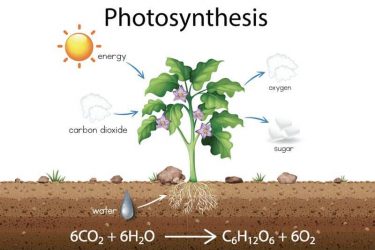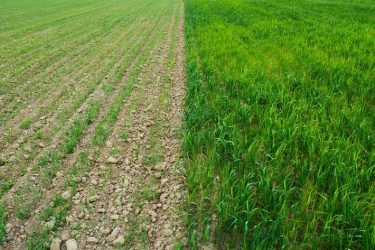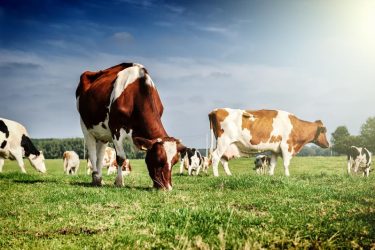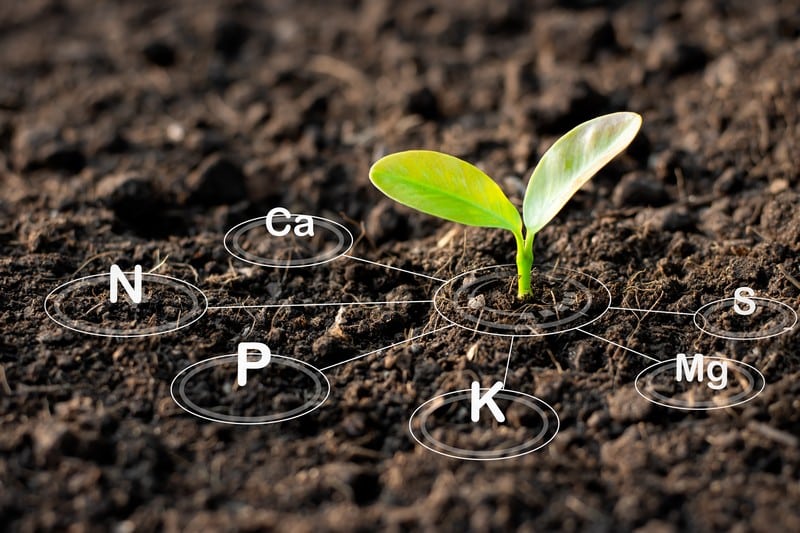The beauty of a full grown crop can be a sight to behold, bringing joy and food to all. Yet, agriculture is not without its impact to the earth. Fortunately, agriculture can supply answers to these issues too…
The Agricultural Impact on Global Warming must be addressed. Agriculture contributes 20% of total Greenhouse Gas Emissions Worldwide, including 45% of Methane Emissions and 80% of Nitrous Oxide emissions1. The latter two gases are far more deleterious than CO2 emissions in global warming.


Agriculture can become its own solution to greenhouse emissions. Regenerative Agriculture Principles can improve soil structure2 which improves microbial life in the soil that allows the soil to capture more carbon in the soil. Good soil health helps improve nutrition for the plant which in turn creates healthier plants that will absorb more carbon than unhealthy plants through photosynthesis: Both soil and plant health are required to capture more carbon. EcoGEM’s Soil Enhancer provides much needed Calcium Sulfate Dihydrate that improves soil structure and enhances plant nutrition.
Use of Calcium Sulfate Dihydrate on dairy, pig and chicken farms – the primary sources of Methane and Nitrous Oxide – allows the farmer to trap these gases and bind them to the Calcium Sulfate Dihydrate, thus preventing escape into the atmosphere.









The application of Calcium Sulfate Dihydrate, a bio-stimulant, will:
- Improve soil structure – minimizing such issues as clumping, crusting, and as a result, erosion5 ; Additionally, it improves micro-organism production in salty soils;
- Improve water infiltration thus bringing water, fertilizers, carbon, and other elements to the lower root levels6 ;
- Improve Calcium and Sulfur macronutrient uptake – which improves the cell structure of the plant making it more efficient during photosynthesis7 ;







- Methane (CH4) is 84x and
- Nitrous Oxide (N2O) is 264x more powerful than CO2 in forcing rising temperatures 8.
Greenhouse Gas Sequestration

At EcoGEM, we are concerned about the important topic of greenhouse gas sequestration. Greenhouse gas solutions, like soil carbon sequestration, can have a positive influence on the emission of gases that affect climate change. The negative consequences of increased greenhouse gas concentrations in the atmosphere can contribute to smog, air pollution, food supply disruptions, extreme weather and increased wildfires.
With our greenhouse gas sequestration, we improve agricultural practices that help to mitigate climate change by reducing the emissions from agriculture and other sources by soil carbon sequestration.
Some types of greenhouse gas sequestration include addressing:
- Carbon dioxide
- Methane
- Nitrous oxide
- Fluorinated gases
For greenhouse gas sequestration, contact EcoGEM today.
(303) 500-6944
Greenhouse Gas Solutions

We offer greenhouse gas solutions with our products containing calcium sulfate dihydrate. Emissions of carbon dioxide have been identified as a major contributor to global warming. We have the greenhouse gas solutions to address global warming issues like environmental, economic and operational problems. The effects of climate change have become environmentally hazardous and economically expensive. The need for greenhouse gas solutions has never been needed more than it is now.
One of our greenhouse gas solutions is when you add calcium sulfate dihydrate to manure pits, it has been shown to reduce methane and nitrous oxide emissions. These are some of the most dangerous gases to global warming.
With our greenhouse gas solutions, you will notice:
- Better soil health
- Better water efficiency
- Better fertilizer efficiency
- Enhanced carbon capture
Get in touch with EcoGEM for greenhouse gas solutions.
(303) 500-6944
Soil Carbon Sequestration

Agricultural soil is among the largest reservoir of carbon and holds great potential for expanded greenhouse gas sequestration. This is because plants take up carbon dioxide through photosynthesis and convert it into carbohydrates that move through the plant root system into the soil. After the carbohydrates have been processed, carbon dioxide is released into the atmosphere. We work at preventing carbon loss, which is the emission, from the soil resource. There is great potential in reducing the concentration of carbon dioxide in the atmosphere through the practice of soil carbon sequestration.
Soil carbon sequestration is a method of reducing the amount of carbon dioxide in the atmosphere with the goal of reaching global climate change. By adding calcium sulfate dihydrate to soil, the structure of soil is improved and able to capture more carbon. Our soil carbon sequestration solutions will improve the calcium and sulfur uptake. This improves the structure of the cells of the plant and makes it more efficient during photosynthesis.
With soil carbon sequestration, there is potential for:
- Improving soil structure
- Improving root systems
- Capturing more carbon
- Improving soil health
Call EcoGEM for any questions you have about soil carbon sequestration.
(303) 500-6944
1 McKinsey & Co.: Agriculture and Climate Change, pg. 6, 7
2 Loveday J. (1981) Soil Management and amelioration. Abbot TS, Hawkins CA and Searle, PGE, eds. National soils conference 1980. Review Papers, pp 39-57. Glen Osmond, Australia: Australia Society of Soil Science Inc.
3 Carbon 180: Leading with Soil, pg. 10
4 Liming Chen and Warren Dick; 2011 from "Gypsum as an Agricultural Amendment. http://ohioline.osu.edu/b945/b945.pdf"
5 Loveday J. (1981) Soil Management and amelioration. Abbot TS, Hawkins CA and Searle, PGE, eds. National soils conference 1980. Review Papers, pp 39-57. Glen Osmond, Australia: Australia Society of Soil Science Inc.
6 Dr. Brent Rouppet, Ph.D. states, “Calcium Sulfate enhances water use efficiency so 25 to 100 % more water is available in calcium sulfate-treated soils compared to untreated soils.”
7 Dr. L. Oldham (2019) Secondary Plant Nutrients: Calcium, Magnesium, and Sulfur. Mississippi State University Extension, MS 39762. Information Sheet 1039 (POD-07-
8 McKinsey & Co.: Agriculture and Climate Change, pg. 6
9 http://www.soilsolutions.net/wp-content/uploads/2015/02/Gypsum-reduces-methane-emission-during-the-stora ge-of-pig-slurry.pdf


